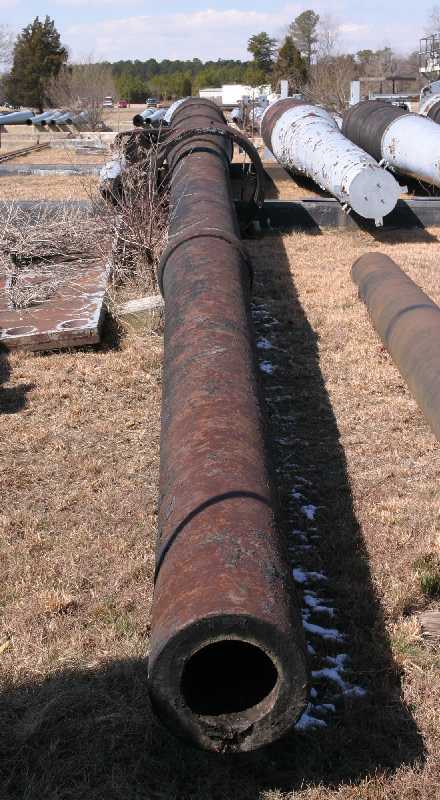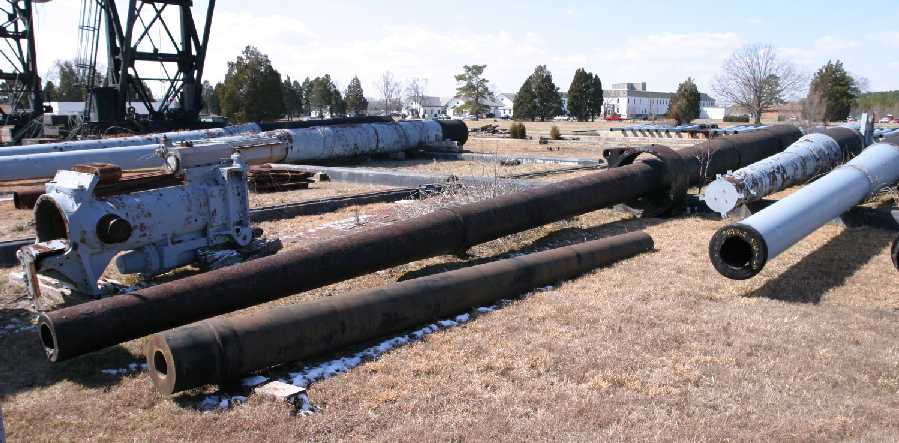

The short, rusty gun to the right of the 9"/98 may be a 6"/47 (15.2 cm) Mark 17 prototype. The shorter gray gun to the right of the 9"/98 with the muzzle cover is 13"/35 (33.3 cm) Mark 2 Serial Number 33 which was converted to 14" (35.6 cm) for use at Plate Battery prior to 1923. On the outside, it looks exactly like a 13" Mark 2 with the exception of the bore being one inch (2.54 cm) larger. The next gun over to the right is 14"/45 (35.6 cm) Mark 12 Serial Number 22 which is now on display at the Pennsylvania Military Museum.
In the background are two 16"/50 (40.6 cm) guns. The closer one is a Mark 2 and the further one is a Mark 7.
Photograph copyrighted by NavWeaps.com.
Presumably inspired by the German "Paris Gun" of World War I, this experimental weapon was converted from a 14"/50 (35.6 cm) gun by lengthening it with a hoop of alloy steel to 900 inches (22.860 m) and installing a heavy alloy-steel liner. The chamber volume was equivalent to that used for the 14" (35.6 cm) guns and the rifling was to be increasing RH from 1 in 48 to 1 in 45. Weight with breech block was 209,429 lbs. (94,996 kg). This weapon was designed to fire a 275 lbs. (125 kg) projectile at a muzzle velocity of 5,000 fps (1,524 mps). The gun was almost completely finished except for the rifling when the project was cancelled about 1919.
A reduced-scale version of this weapon was the 3"/105 (7.62 cm) Mark 16.
"US Naval Weapons" by Norman Friedman
"A Treatise on Rifling of Guns" by Carl F. Jeansén
---
Special help from Leo Fischer and James P.
30 October 2006 - Benchmark
01 February 2016 - Added information about other guns in the photographs
25 July 2016 - Converted to HTML 5 format
26 October 2020 - Reorganized datapage
